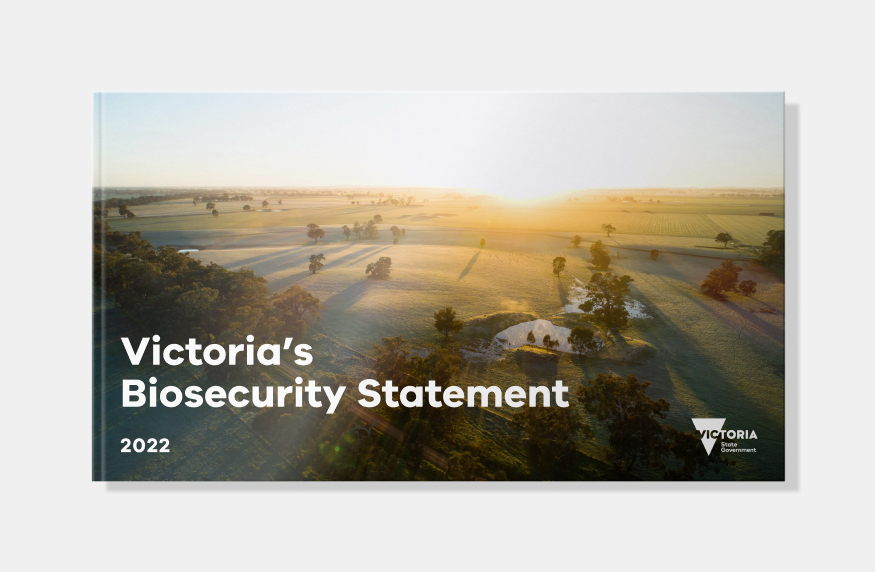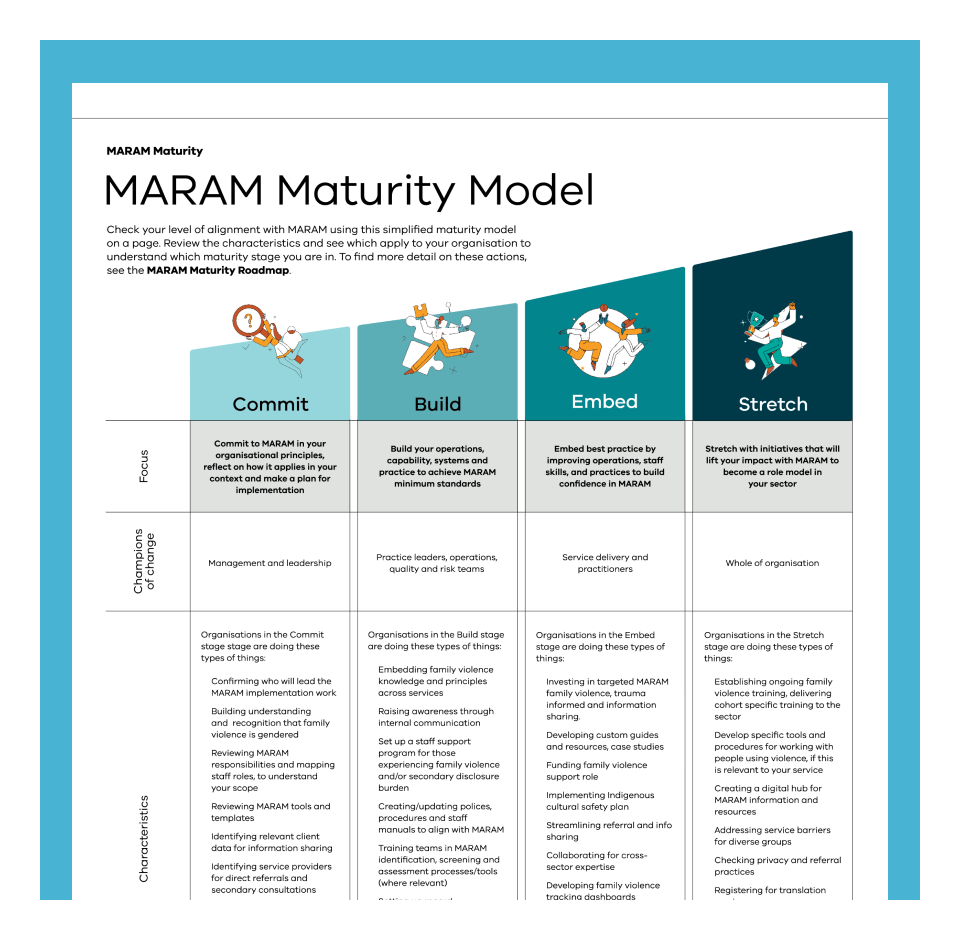Digital Transformation Agency
Mapping the death of a loved one to improve government services
The Digital Transformation Agency asked us to conduct research that asked Australians – ‘What’s it like to deal with the death of someone close to you?’

Outcomes
-
Opportunities for improvement that are widely applicable across all of government
-
A journey map showing the complexity and nuance of the experience, the services people need to access, and the challenges they face
-
A public research report that was shared widely and led to strategic initiatives across Federal and State Governments in Australia
Services
- Research and insights
- Service design
- Social innovation
- Journey mapping
Sectors
Researching death in Australia
Coping with the death of a loved one is one of the most difficult events in anyone’s life. Although death affects us all at some point, Australians rarely prepare for it, and the topic itself is still taboo.
Over 10 weeks, we conducted in-depth interviews with over 40 people who had recently experienced the death of a loved one. This research required a carefully considered ethical approach to research, in which care for our participants and staff was paramount.
We collected a diverse range of experiences from people of different ages, socioeconomic backgrounds, geographic locations, and cultural and linguistic communities, including Aboriginal Australians. We also spoke to service providers, including medical staff, lawyers, counsellors and funeral directors.
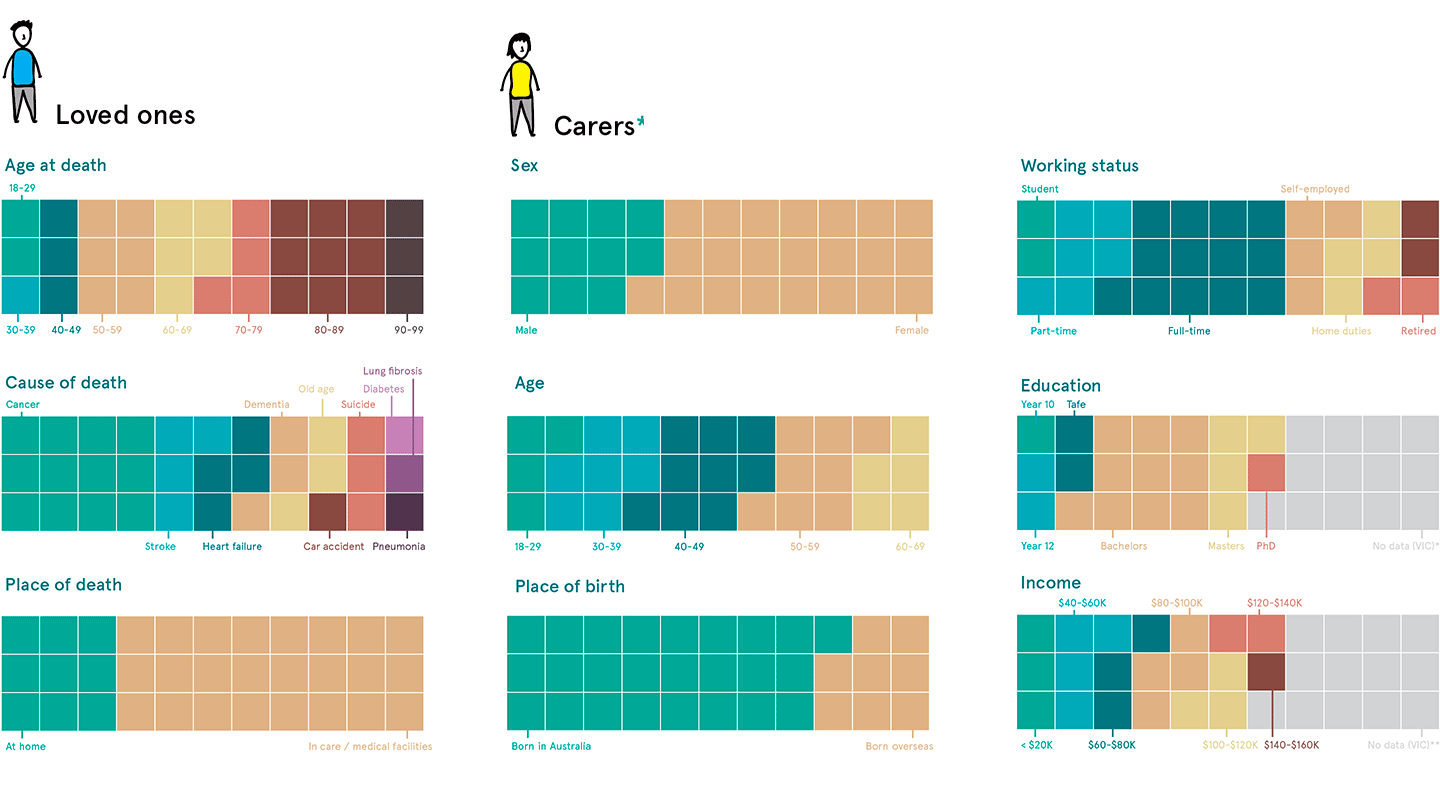
A data visualisation from the project report that represents the different carers interviews for the project and the loved one's that they lost.
Understanding the experience
The aim was to uncover insights that could improve the role that government services play in this key life event, and to find opportunities to improve the experience for people in this often traumatic and difficult time.
The stories we uncovered highlighted the difficulties of dealing with expected and unexpected death, with death in cross-cultural situations (for example, an elderly relative from overseas dying whilst in Australia), the complexity of family dynamics (including will disputes), and the long-term effects on people’s wellbeing of grief, trauma, and post-traumatic growth.

A participant shares their story of a loved one's death.
Representing complexity
Our research showed that there is no one-size-fits-all solution that can be applied to end-of-life care or what happens afterwards. Death happens to everyone – not just old people – and the circumstances can vary from foreseen to highly shocking and traumatic.
The services people need to access afterwards (such as applying for death certificates, making insurance claims, or closing accounts) are then delivered by specific departments and organisational groups with little to no integration. So, accessing each one can cause real pain and suffering at an already difficult time.
It was important that we presented this diversity and complexity in ways that government departments could act on. To do this we made a journey map that showed where large gaps and opportunities for improvement exist. Providing specific, evidence-based recommendations that address people’s real needs.
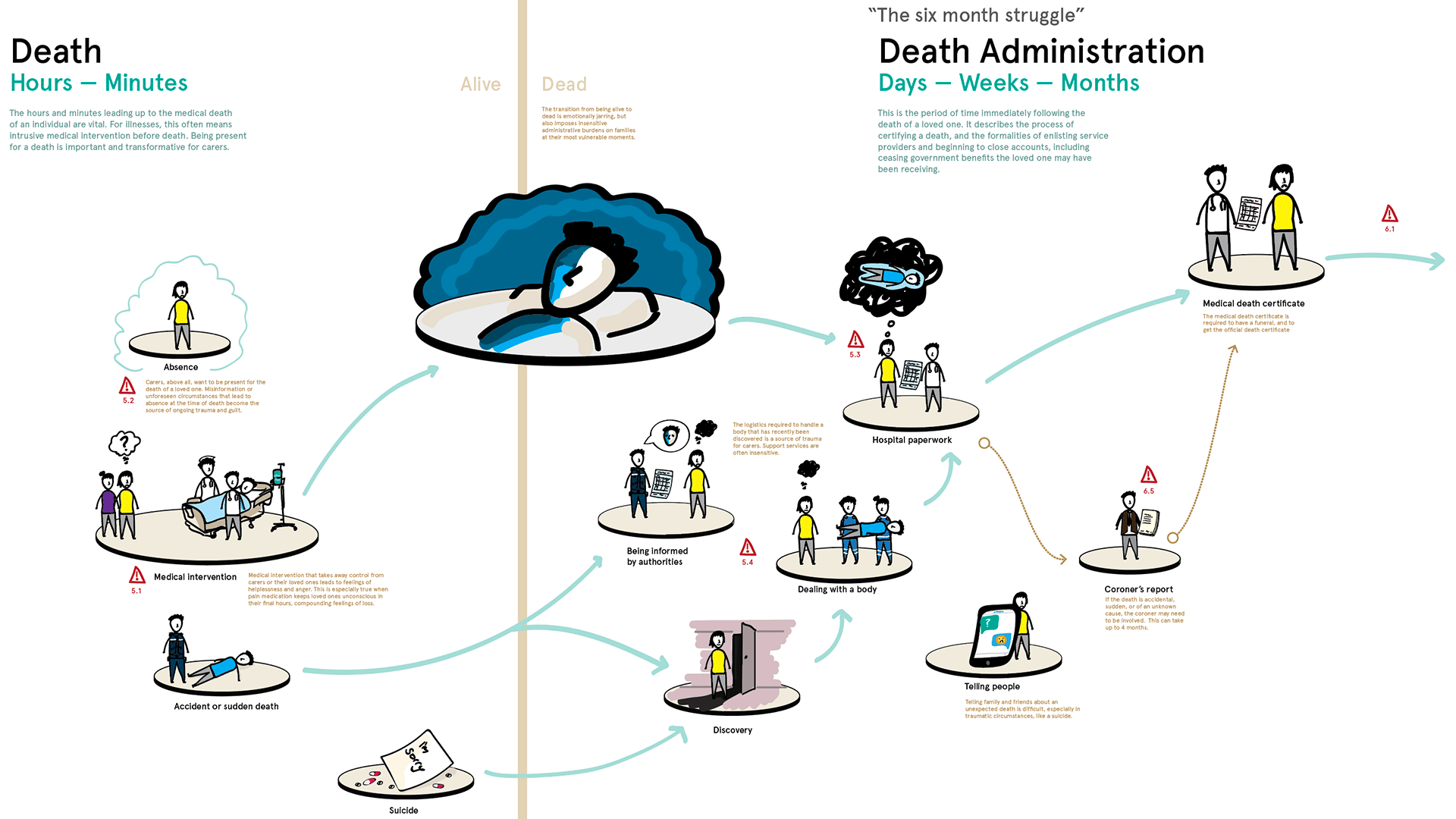
A part of the customer journey map that highlights the key actions, feeling and changes before and after the death of a loved one.
Making it accessible
We also produced a detailed report that explored issues thematically, including ‘what makes a good death?’ and ‘what’s it like to lose a loved one?’. It included case studies that highlighted people's personal stories, as well as clear actions that governments and organisations could take to improve people’s lives.
Together, both this report and the journey map form enduring foundational research, which has been shared widely, leading to strategic initiatives across Federal and State Governments in Australia.
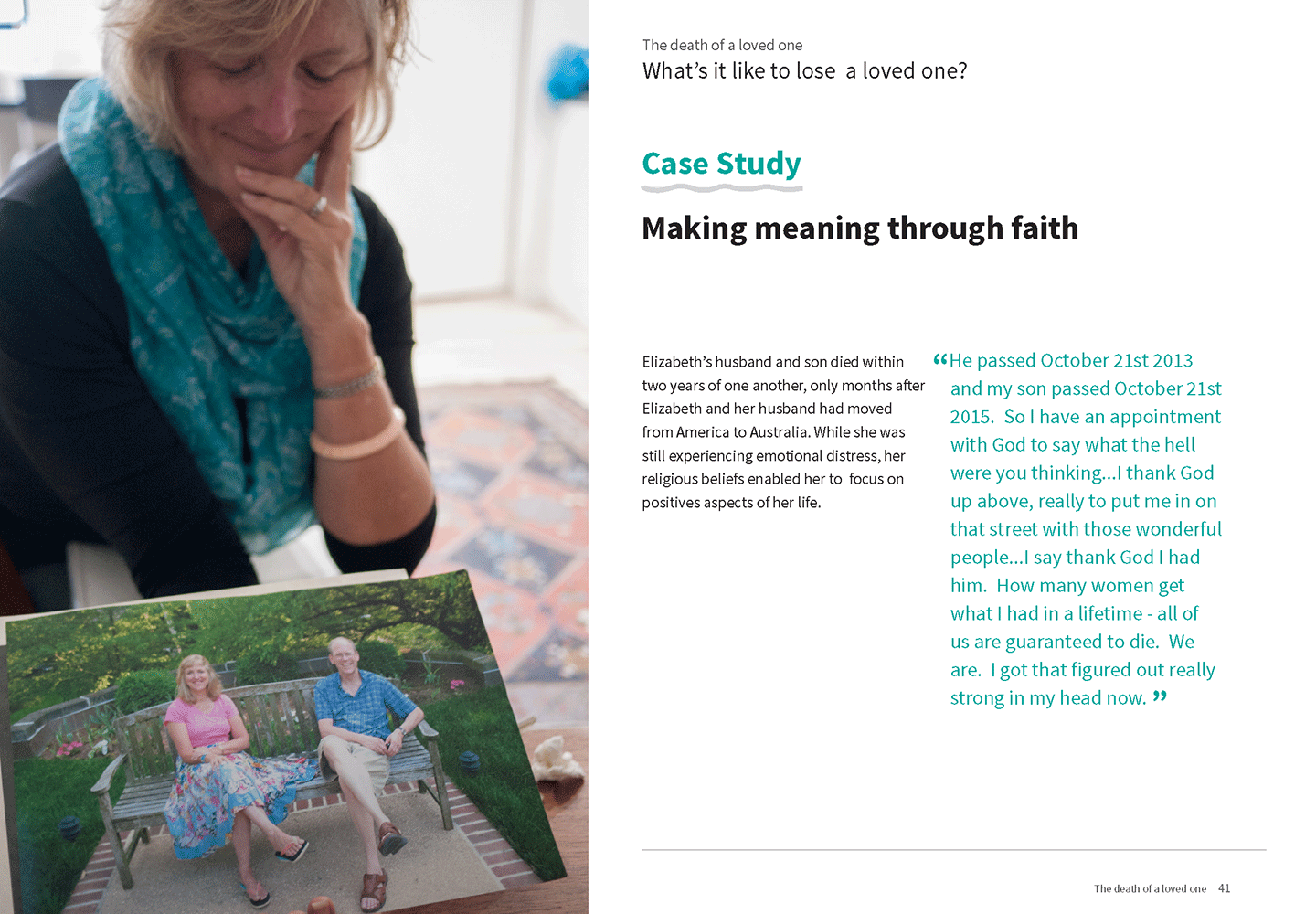
A page from the detailed report put together to accompany the journey map
